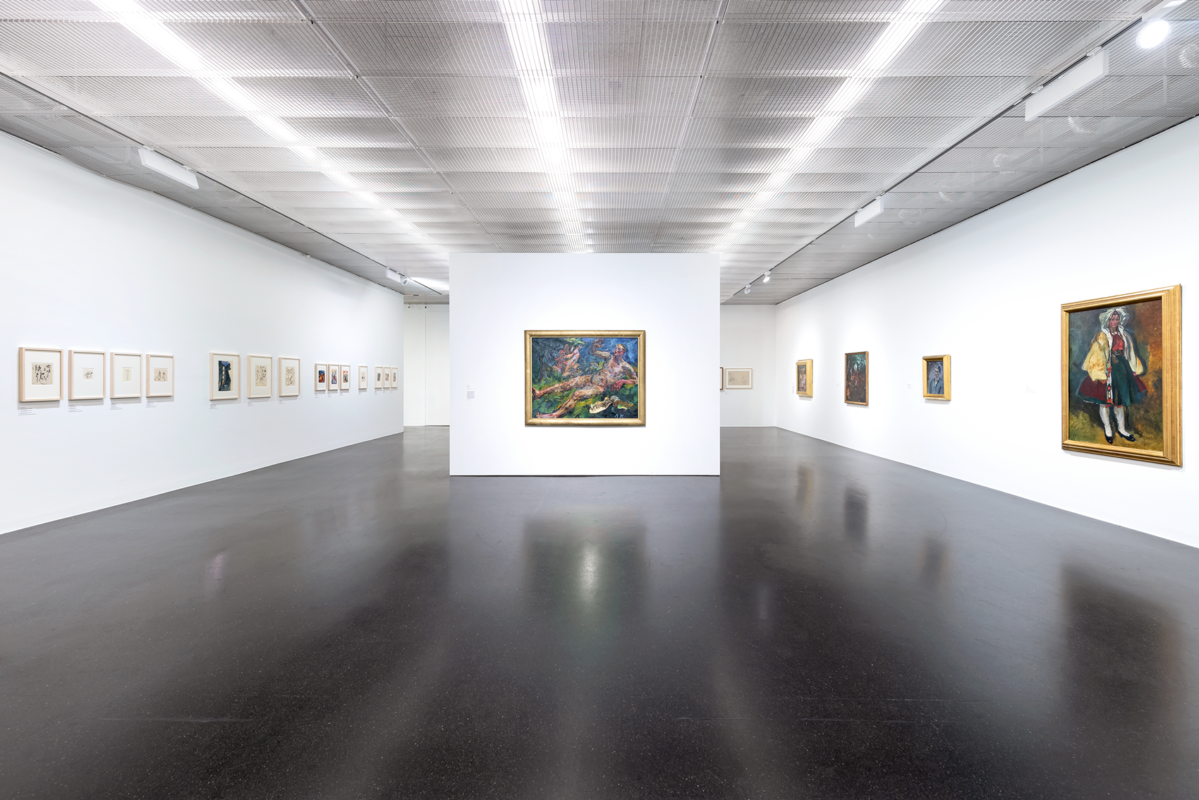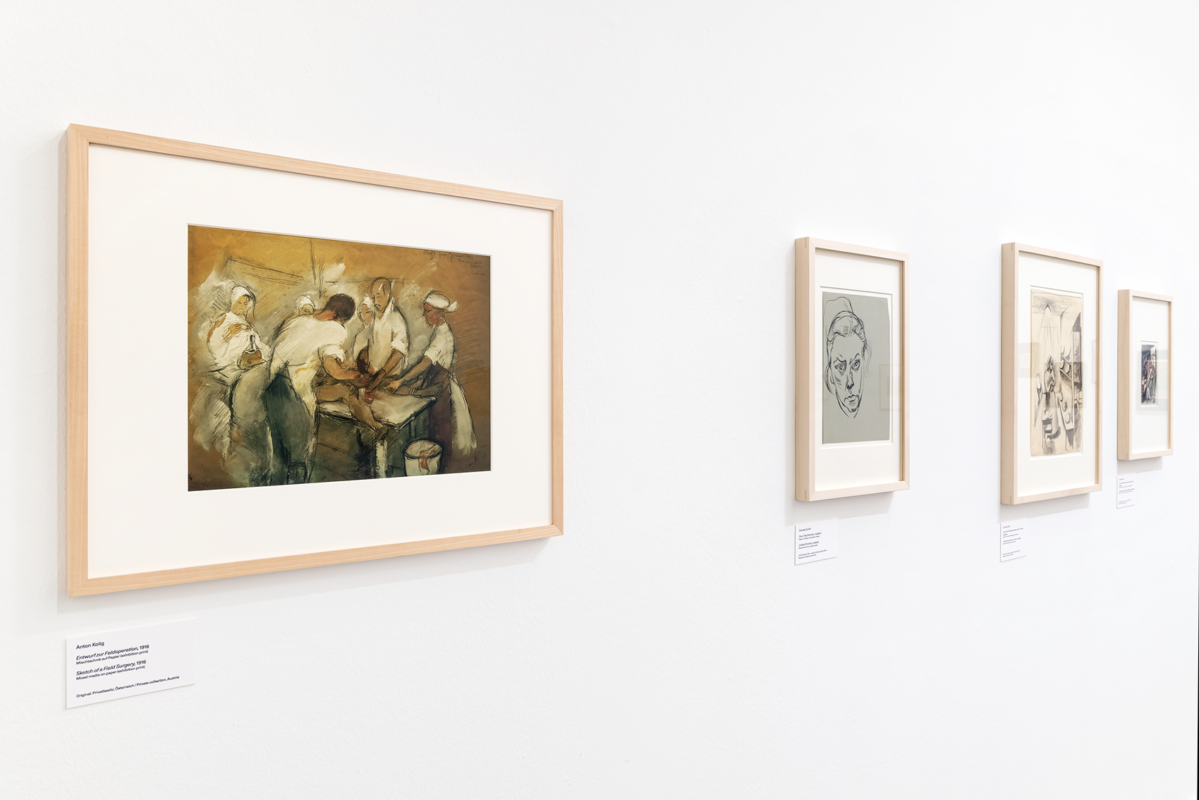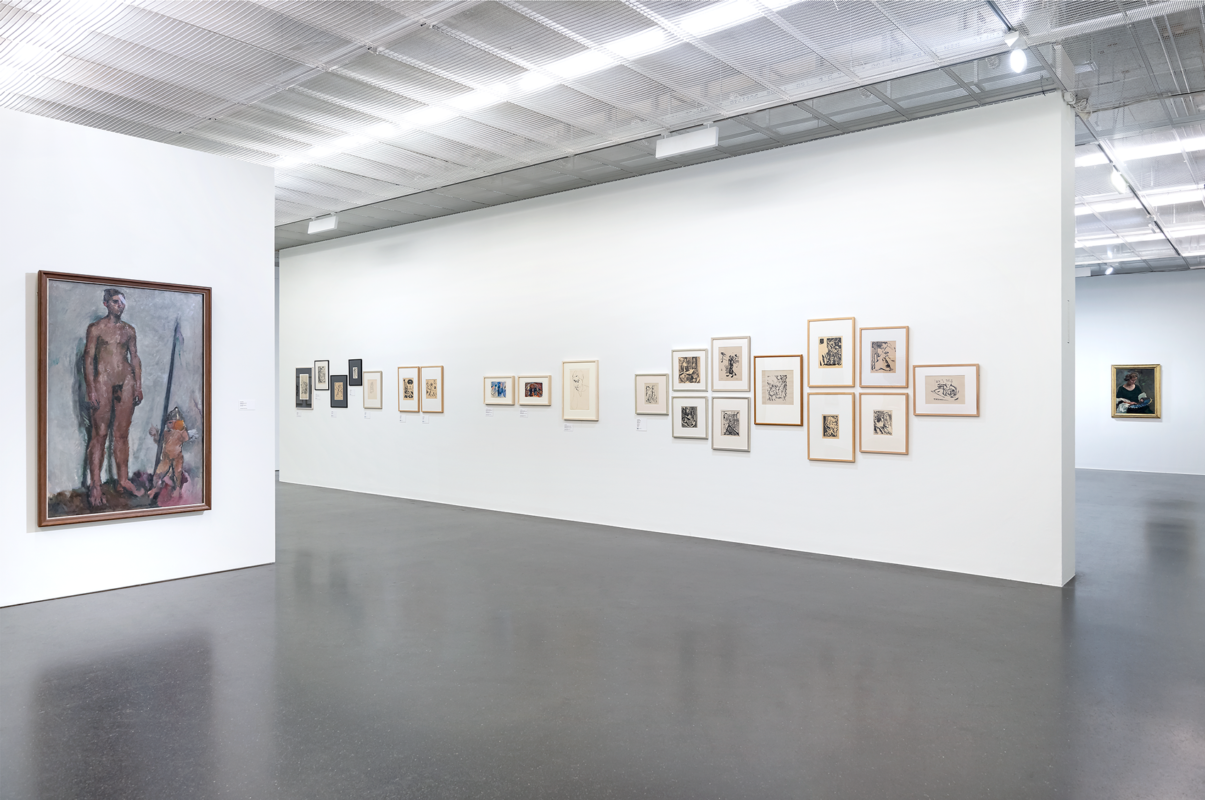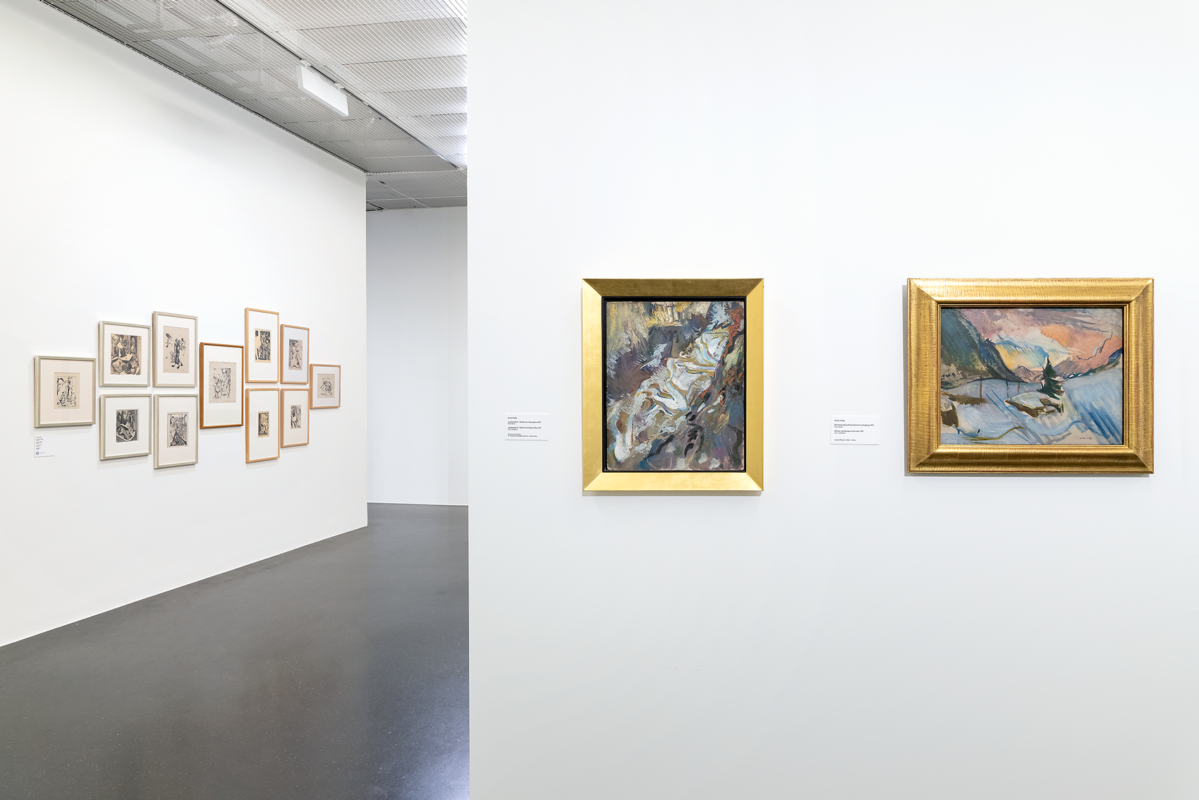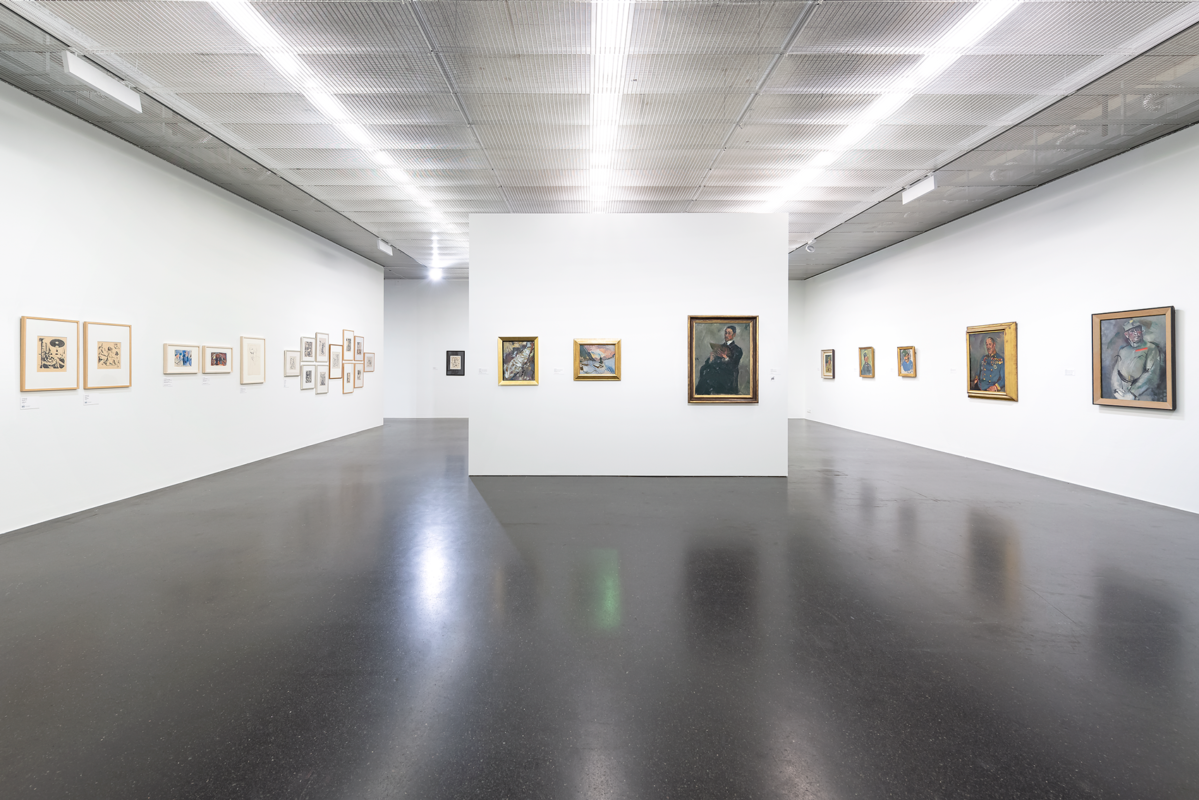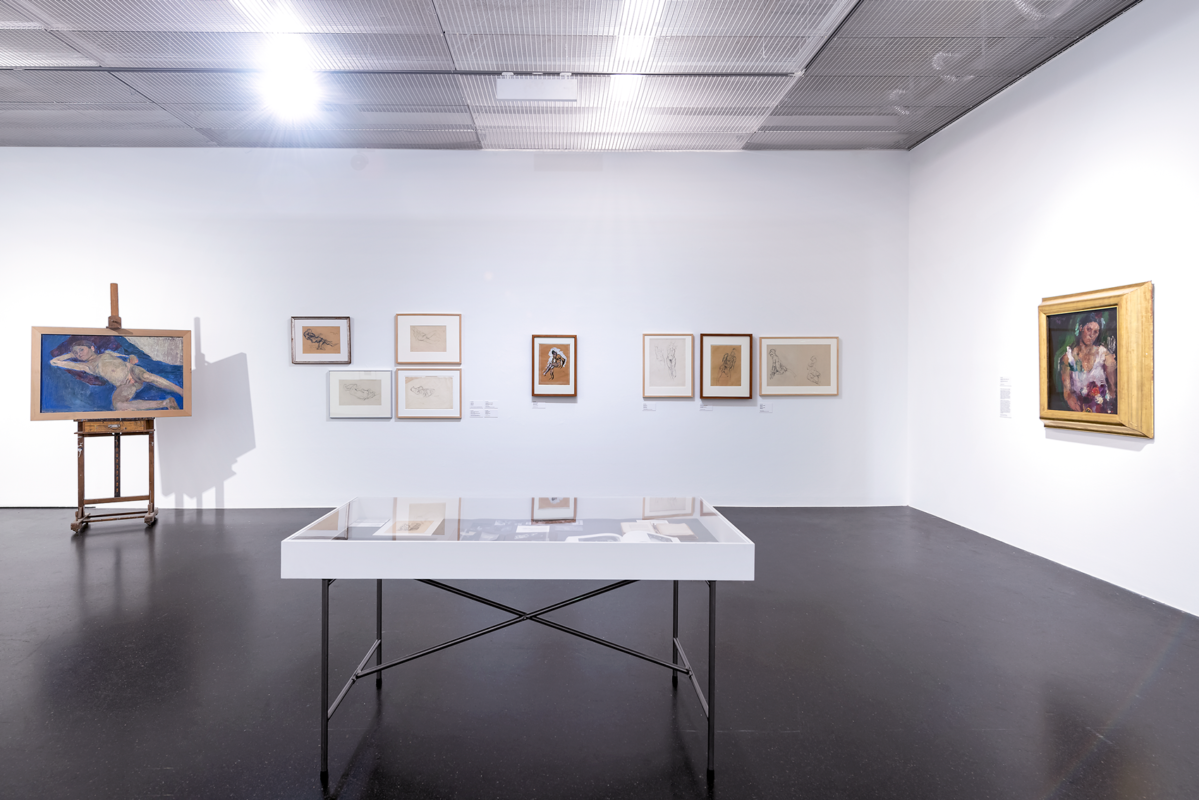Cornelia Gurlitt & Anton Kolig
A Journey of Hearts
Cornelia Gurlitt (1890 – 1919), daughter of the Dresden art historian Cornelius Gurlitt and sister of the art historian Hildebrand Gurlitt, “Hitler’s art dealer”, was a graphic artist associated with German Expressionism, possessing talent and ambition in equal measure. The young artist, who was stationed as a nurse on the Eastern Front in Vilna (present-day Vilnius) during the First World War, was not destined to live to see her brother’s rise to the highest ranks of National Socialist art bureaucracy. In 1919, she committed suicide at the age of 29.
“With each one I abandoned, a piece of my soul perished,” writes Paul Fechter in his romantic novel “Die Gärten des Lebens” (The Gardens of Life) twenty years after Cornelia Gurlitt’s suicide. Was it her tragic love affair with the art critic and writer, who was also stationed in Vilna, that drove the artist to such an untimely death?
In Anton Kolig’s (1886 – 1950) official biography, Cornelia Gurlitt whom he met in 1913 in Paris or Dresden where the painter was residing, has so far remained hidden. He presented his “Erstes Selbstbildnis” (First Self-Portrait) executed in 1915 to his devoted girlfriend and dedicated to her one of his major expressive works, “Klage” (Lament). Very little is known about the relationship between the two artists who were bound by a spiritual affinity. In 1919, Kolig undertook the painting “Frau mit Fächer” (Woman with Fan), which he would keep by his side for the rest of his life, in gratitude and memory of Cornelia.
Works, long hidden from public view, by Cornelia Gurlitt whose œuvre has never before been exhibited on this scale in Austria, and early works by Anton Kolig will be brought into dialogue for the very first time.
The exhibition was created in cooperation with the Kunstmuseum Bern, the Vilna Gaon Museum of Jewish History, Vilnius and private lenders.
Curators:
Hubert Portz (Kunsthaus Désirée, Hochstadt/Pfalz) and Elisabeth Nowak-Thaller (Lentos)
Video
*Please understand that we offer our video production in German language only.
